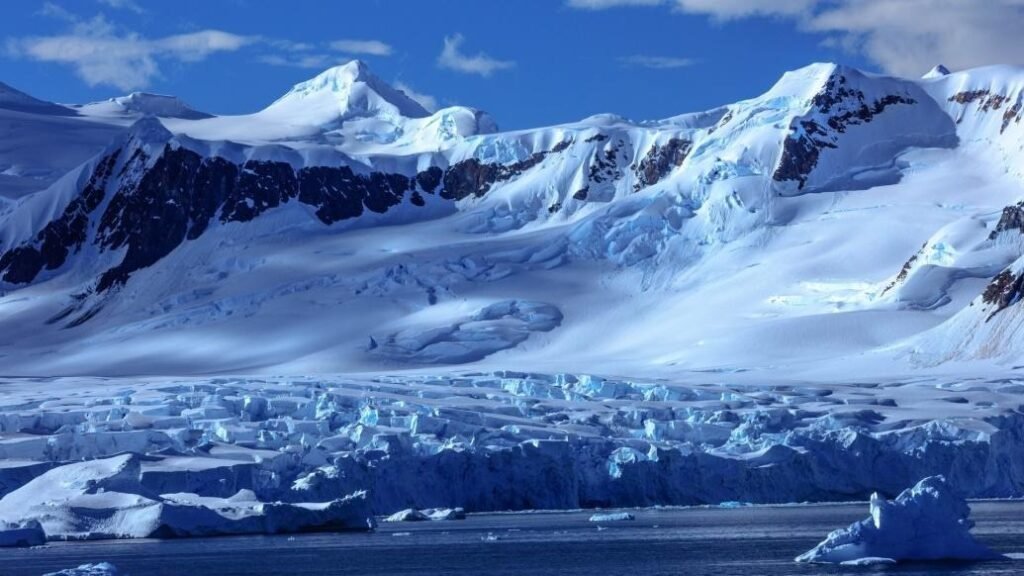Why in the news?
The Finance Ministry has approved Maitri II, India’s next-generation research station in eastern Antarctica, scheduled for completion by January 2029. Aligned with the vision of Viksit Bharat by 2047, this initiative aims to strengthen India’s scientific presence, advance climate and polar research. It will enhance the nation’s strategic and diplomatic leadership in global polar governance.
Maitri II is important for UPSC CSE and APSC CCE exams. It links to the syllabus topics of Geography (Polar Regions), Environment and Ecology, Science & Technology, and International Relations or India’s Foreign Policy.

What is Maitri II?
- Maitri II will be India’s fourth research base in eastern Antarctica.
- Despite being first proposed in late 2023, it will be completed by January 2029 and operational by January, 2032.
- The National Center for Polar and Ocean Research (NCPOR) under the Ministry of Earth Sciences is the nodal agency responsible for its operation.
- It has a financial outlay of about 2000 crore for over seven years.
- At present, India’s two active research stations – Maitri (established in 1989) and Bharati (commissioned in 2012), serve as vital hubs for scientific exploration and data collection in the remote expanse of Antarctica.
What are its Key features?
- Designed to surpass the original Maitri in size, Maitri II will be a sustainable, ‘green research station’.
- It is based on sustainable and renewable energy sources of power. It is equipped with solar panels for the summer and wind turbines to capture Antarctic winds.
- Moreover, it will have cutting-edge technology and automated instruments that can collect and transmit data to mainland India, even when the station is unmanned.
- It will accommodate enhanced facilities boasting better living accommodations and modernized sanitation systems.
Other Indian Research Stations in Antarctica
- Dakshin Gangotri (1983):
- This station was the first research base in Antarctica, established under the Indian Antarctic Program in 1983. It went submerged in ice and decommissioned in 1990.
- Since 1981, Indian Antarctic Programme, directed by NCPOR has aimed to advance scientific research and safeguard India’s strategic and scientific interests in the polar region.
- Maitri (1989):
- It was India’s second permanent Antarctic research station established in 1989.
- Maitri is located along the Schirmacher Oasis – a 20 km long ice free landmass in East Antarctica surrounded by ice sheets and shelves.
- India also created a freshwater lake called Lake Priyadarshini.

Maitri I, established in 1989
- Bharti (2012):
- It is located about 3,000 km east of Maitri, the ‘Bharati’ research station lies between Thala Fjord and Quilty Bay.
- The station with a very small footprint was commissioned on 18th March, 2012 to facilitate year-round scientific research activity by the Indian Antarctic program.
India and Polar Governance:
- Global Commitment: As a Consultative Party to the 1959 Antarctic Treaty, India is to uphold the principles of peaceful use, scientific collaboration, and environmental protection of the Antarctic region.
- Legal Framework: The Indian Antarctic Act, 2022 establishes a domestic legal framework to regulate India’s activities in Antarctica, ensuring full compliance with the country’s commitments under the Antarctic Treaty system.
About Antarctica

- Antarctica is the fifth largest continent, located within the Antarctic Circle and surrounded by the Southern Ocean.
- Covering nearly 14 million sq. km, Antarctica is 98% ice-covered and holds over three-fourths (approx. 75%) of the world’s freshwater resources.
- Antarctica has no native human population, and mainly scientific researchers forms the human presence at about 69 research stations.
- The Antarctic Treaty of 1959 establishes governance over the continent, mandating its use solely for peaceful and scientific purposes while freezing all territorial claims.
- Antarctica is Earth‘s southernmost and least-populated continent.

Significance of Antarctica
- Antarctica holds about 75% of the World’s freshwater, making the study of its ice sheets vital for predicting future sea-level changes.
- It is essential for exploring potential mineral resources, understanding marine life, and establishing ecological baselines.
- Antarctica’s ecosystems, especially the Southern Ocean, play a pivotal role in capturing carbon. The small, shrimp-like Antarctic krill might seem insignificant, but they are champions in the carbon cycle.
- It will strengthen India’s global presence in international climate policies and polar governance forums.
- Antarctic ice cores hold secrets of Earth’s past climate and reveal levels of greenhouse gases from thousands of years ago. This data provides invaluable insights into how our climate has evolved over millennia.
- Geopolitical significance: overlapping territorial claims, China’s expansion with dual-use critical infrastructures raises global concerns.
- As the world’s fifth largest continent, Antarctica offers unique wildlife and extreme weather – cold, dry and windy – making it one of the most sought after research destinations for unexplored terrains.
Conclusion:
The establishment of Maitri II will symbolize India’s forward-looking vision under Viksit Bharat @2047, showcasing the nation’s commitment to sustainable science, innovation, and global leadership. By promoting renewable energy, advanced research, and environmental responsibility, Maitri II strengthens India’s role in climate action and polar governance. It stands as a testimony to how scientific progress and ecological stewardship can together propel India toward its goal of becoming a developed and self-reliant nation by 2047.
Sources:
- https://www.indiatoday.in/information/story/india-to-replace-maitri-with-maitri-2-research-station-in-antarctica-by-2029-2657420-2024-12-30
- https://indianexpress.com/article/long-reads/decks-cleared-for-maitri-ii-india-set-to-chart-new-frontiers-in-antarcticas-icy-wilderness-10303286/
The Finance Ministry has approved Maitri II, India’s upcoming Antarctic research station.
Maitri II will be India’s fourth Antarctic research base. It will be in eastern Antarctica under the supervision of NCPOR.
It will be a sustainable “green” station, powered by solar and wind energy, featuring automated instruments and improved living facilities.
It enhances India’s scientific and strategic presence, boosts climate research, and strengthens polar diplomacy in global governance.
India currently operates Maitri (1989) and Bharati (2012), with Dakshin Gangotri (1983) decommissioned, all under the Indian Antarctic Programme led by NCPOR.












